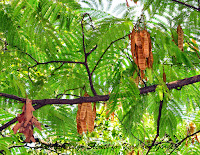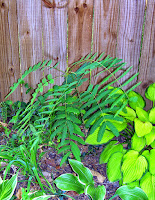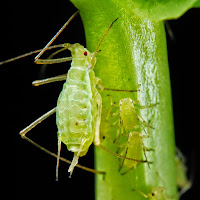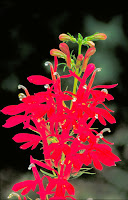The Albizia julibrissin silk tree is commonly referred to as the Persian silk
tree or the mimosa tree. Many homeowners
grow this ornamental tree for the fern-like leaves and the showy fragrant
flowers.
The flowers
bloom in early summer and are rose pink tipped with red. These flowers attract
bees, butterflies, and hummingbirds. The Persian
silk tree will accent your landscape beautifully with its eye-appealing
greenery and exotic flowers.
Grow the Persian silk tree from seed , when seed in planted in the fall it will grow two feet by the end of the following summer. This fast growing tree can reach the height of 25 to 40 feet within 10 years and is a good landscape tree for shade.
Growing the
Persian silk tree is easy provided you have a way to get the seeds. The best
way to get the seeds is to ask a neighbor who grows the tree for a seedpod,
most homeowners are eager to give away the seeds because if the seeds are left
on the tree and they fall to the ground the seedlings will germinate quickly
and this is how the tree becomes invasive.
Harvesting
Persian Silk tree Seeds
Allow the
seedpods to dry out on the tree. When
they are ripe and ready for harvesting the outer shell will be dark beige. Collect the seedpods from the tree and lay them out on a paper towel. Break open the
seedpod and remove the brown seed. Set
the seed in an envelope for fall or spring planting.
Planting Silk
Tree Seeds
Plan to plant
the seeds in spring or late summer. If
you plant in late summer do allow 6 weeks before hard frost.
Plant seeds
in a container or in the ground. Many
times I will grow seeds in a container and put the container in the greenhouse
over the winter. Come spring the seedlings are approximately 12 to 18 inches in
height and ready to be transplanted into the yard.
Another way
to plant the silk tree seeds is to sow them into well-drained acidic soil with
a PH of 4.6 to 5.0. Silk trees grow best
in full sun to partial shade. If you plant
more than one silk tree space the trees 20 feet apart.
Get the
growing site ready for planting by clearing away the grass. It is best to clear a circle of 2 feet
wide. By doing this the tree will not be
competing with other plants or grass for hydration.
Work the top
10 inches of the soil with your shovel; loosen the soil so that it is a fine
texture. Amend the soil with compost or
manure. Plant the seed in a hole that
is two inches deep. And water well. Cover the planting site with organic mulch;
pine needles, dried grass clippings, or a thin layer of straw.
Care for
Persian Silk Tree
Keep the
growing site evenly moist but not wet. Do not allow the soil to dry out as it
puts stress on the seedling. Germination
for the seed is 7 to 14 days.
Persian Silk
Tree Tips
- Flowers are high in pollen and may cause people to have an allergic reaction.
- Leaves will fold inward and appear closed at night and during periods of rain.
- Deep rose-colored flowers will bloom mid-summer.
- Flowers are a good nectar source for honeybees.
- Grow the Persian Silk Tree in USDA Zone 6a to 10b
- The seeds can be harvested for livestock feed or for forage for wildlife
- The Persian silk tree is commonly referred to as the Mimosa in the US. The mimosa tree is related to the silk tree but the flowers are different.
- When the Seedling is 10 inches tall fertilize the small tree with spray n' grow.
- Stake the tree to support it and to help it to grow straight.
- Helpful to add a mulch ring around the base of the tree to protect it from lawnmowers and trimmers.












